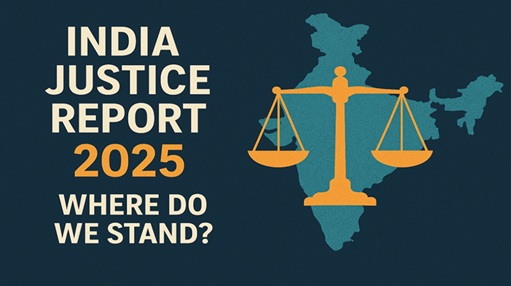(Preliminary Examination: Current Affairs)
(Mains Examination, General Studies Papers 1 and 2: Role of Women and Women's Organizations; Structure, Organization, and Functions of the Judiciary) |
Context
Women's participation at the higher levels of the judiciary in India remains extremely limited. According to the India Justice Report 2025, only 14% of judges in the High Courts and a mere 3.1% in the Supreme Court are women. This situation highlights the serious lack of gender equality in the justice system.

About the India Justice Report 2025
- The India Justice Report 2025 is an independent assessment that analyzes the state of equality, representation, and efficiency in the country's judicial system.
- According to the report, the very low presence of women at the higher levels of the judiciary hinders the goal of equal access to justice.
- Only one of the 34 judges in the Supreme Court is a woman, and only one of the 25 High Courts has a female Chief Justice.
Gender Equality in the Courts
- The primary reason for low female participation is the collegium system, in which the appointment of judges depends on the decision of a limited group.
- In contrast, the situation is better in lower courts, where selection is done through competitive examinations, providing equal opportunities for women.
- Women constitute approximately 38% of judges in lower courts.
- However, 20% of district court complexes still lack basic facilities, such as separate toilets for women.
Need for Reform
- A national-level competitive examination is needed to increase women's participation in the judiciary.
- President Draupadi Murmu suggested the establishment of the All India Judicial Service (AIJS) in 2023, making the selection process transparent and merit-based.
- Concerns about the independence of the judiciary are unfounded, as such examinations are conducted without any interference in the lower judiciary.
- This system will not only bring transparency but also provide opportunities to underrepresented sections of society.
Union Public Service Commission (UPSC) as a Model
- The UPSC model is an excellent example in this direction.
- Today, there has been a significant increase in both diversity and female participation in civil services recruitment through the UPSC.
- Of the 1,009 candidates selected in 2024, 318 were from OBCs, 160 from SCs, 87 from STs, 109 from EWS, and 11 were women, with 11 ranking among the top 25.
- In the IPS, 54 women were selected in 2024, representing 28% of the total.
- This model demonstrates that a transparent and national competitive system can bring inclusiveness and balance to the judiciary.
The Way Forward
- Article 312 of the Indian Constitution empowers Parliament to establish new services, such as the All India Judicial Service.
- This service will ensure uniformity, transparency, and equality of opportunity in the judicial selection process.
- This examination could be conducted by the UPSC, while remaining under the control of the Supreme Court.
- Selected candidates will need to be provided with appropriate training and experience in judicial administration.
Conclusion
Justice is important not only for judges, but for every citizen of society.If India's judiciary is to be made more inclusive, balanced, and representative, increasing women's participation is essential. A transparent and national-level judicial service examination could prove to be a historic step towards equality in the justice system.



